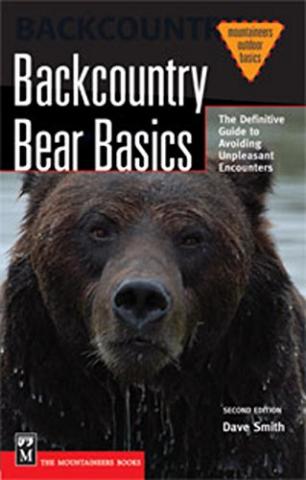Indeed, through the book's 142 pages of text Smith reads like a backcountry veteran separating fact from fiction and dispensing sage advice.
"Bear literature is confusing and contradictory. Inaccurate assumptions masquerade as biological axioms, and conventional wisdom about bears is often just bad advice," he writes in opening the book. "The same books and brochures that advise you to climb a tree to safety to escape a charging grizzly insist that you should never run from a bear.
"They tell you not to run because flight can trigger pursuit and you can't win a race with a bear; they say climb a tree instead, because adult grizzlies can't. Whoa. Hold on. Before you start climbing, ask yourself two critical questions. First, if flight is likely to trigger pursuit, won't grizzlies chase tree-climbers and track stars with equal abandon? Second, how much time will you have to squirrel up a tree when you startle a grizzly at 60 yards or less?"
Smith has fun with this book, a companion to his previous work, Don't Get Eaten: The Dangers of Animals that Charge or Attack. He seems to particularly relish playing media reports on bear behavior against each other. For instance, he notes that the February 1995 issue of Backpacker magazine carried a story titled, The Real Truth About Grizzlies: Why You Have Little to Fear, while the February 1995 issue of Outdoor Life magazine ran a story called, Should We Hunt Grizzlies: A Tale of Terror Holds the Answer."
He does so to point out that "bear literature is rife with erroneous information and self-serving facts."
Beyond this lampooning, however, Smith dispenses commonsense regarding how you should prepare for backcountry trips, how to school your children on their behavior in bear country, and the bottom-line kernel of truth that "...there's no guarantee of your safety in bear country. If you're injured by a bear, don't blame anyone but yourself. If you're not willing to accept responsibility for your decision to go afield in bear country, go somewhere else."
Along with doling out basic bear biology, including how to differentiate between black and grizzly (aka brown) bears, Smith addresses the issue of menstrual odors and whether they influence bear behavior, and how participants in a range of sports, from cross-country skiing to mountain biking, should behave in bear country.
Smith's book is a good, informative read, one that contains some good advice that can make your next trip into bear country less stressful.





Add comment